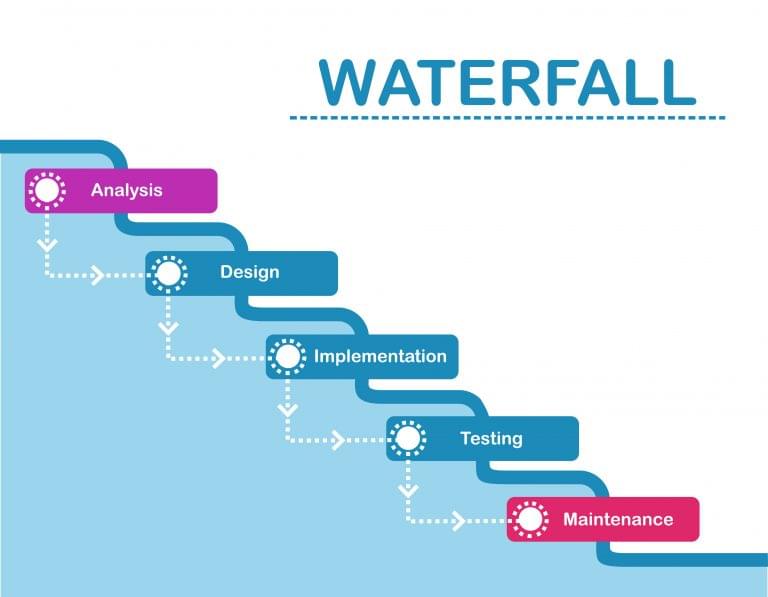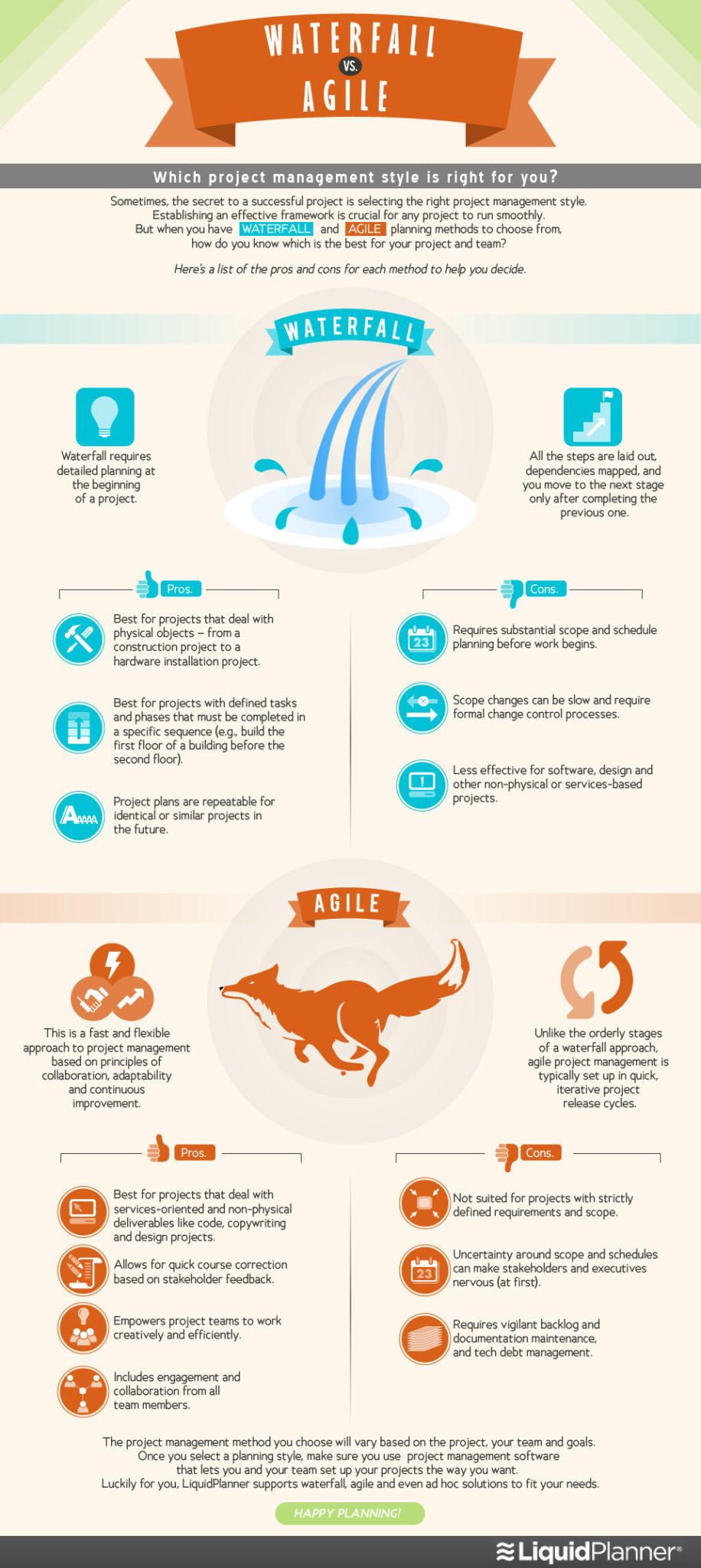

- #Agile vs waterfall project management 2016 software#
- #Agile vs waterfall project management 2016 code#
Thorough testing means that the product is likely to reach its launch date.Testing at the end of each cycle ensures bugs are caught quickly and taken care of in the development cycle.Evaluating project priorities at the end of each sprint allows clients and stakeholders to provide feedback and get the product they want.Features can be easily added to keep current with changing industry standards.Changes can be easily made, with re-writes to the program standard procedure.This allows for bugs to be discovered sooner than later and for client or stakeholder feedback to be incorporated before the next sprint is run.Īgile is best for projects where production speed is the focus rather than project quality, where the scope of a project may change, where the picture of the final product isn’t clear, where you have developers with the skillset to think independently, and where the product is for an industry with rapidly changing standards. They then work on small modules in weekly or monthly sprints and at the end of each sprint, project priorities are evaluated and tests are run. Unlike Waterfall, Agile follows an incremental approach, with developers starting off with a simplistic project design. With testing at the project’s end, there can be a tendency to rush through the testing process in order to meet a deadline-a poorly tested product can result in a failed launch.With all the requirements gathered upfront, there is an increased possibility of missing the mark with coding requirements.As many as four phases of the project need to be completed before actual development begins, which can mean slow delivery times.
#Agile vs waterfall project management 2016 code#
Requirement errors or changes mean the project has to start from the beginning with most of the previous code scrapped.
#Agile vs waterfall project management 2016 software#
Teams typically do not require additional training, as Waterfall is the traditional approach to software project management.Documentation and paper trail for each phase of development make it easy to follow the logic of past projects and lay the groundwork to ramp up new projects.



 0 kommentar(er)
0 kommentar(er)
